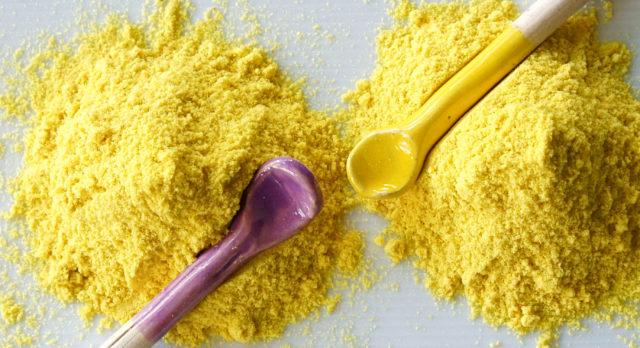
You will certainly have come across this small yellow jar, found in the Indian ethnic shop, with the above translation "assafetida"and you may have wondered what this umpteenth contains and what is it for spice.
Or you have found it among the Donald Duck pages, when the harpy Agnes served Uncle Scrooge a disgusting "asafoetida flan" that he had to eat until the last bite.
Here, now let's try to understand what is hidden in this plant, widely used in Indian and Ayurvedic cuisine, but not only, and how it is used.
Asafoetida: bad name but good plant
Also note as compost or devil's dung, stinking gum, fetid fennel, botanically known as Ferula Foetida, asafoetida or assafoetida is a perennial species of the Umbelliferae family, native to the Middle East, especially from Persia.
Hence its name, "aza" which means root and "fetida", from the Latin, dal bad smell.
In the kitchen it is used dried gummy resin obtained from the root, 4 years old; it has a light yellowish-brown color, it is mainly marketed in powder and has a rather pungent taste, very similar to that of garlic and spicy like black pepper.
In Indian, vegetarian and Ayurvedic cuisine it is used to enhance and harmonize the flavors of recipes, flavor dishes based on rice, but also for the vegetables, legumes and various sauces. Little is used, because it is very strong, together with other spices; it can be kept separately or hermetically sealed to prevent its aroma from contaminating other products.
Try the recipes with pumpkin and asafoetida
Uses and properties
Asafoetida is not only used in cooking, but also in the medical field; it contains in fact essential oils, ferulic and valeric acid, sulphurous substances.
It is a spice with therapeutic properties able to counteract various ailments: basic it is carminative, disinfectant, makes you digest and is excellent for the intestine.
In India, China and Thailand, but also in other countries such as Afghanistan, Egypt, Morocco, Malaysia and Nepal, it is used for various problems, in particular as an anti-flu, to aid digestion and in cases of asthma and bronchitis.
Used to harmonize the vata and kapha energies in Ayurveda, asafoetida is considered one of the best spices to balance the Vata dosha and eliminate phlegm, bronchitis and whooping cough.
It is often chewed to cure nervous disorders and spasms, even using it for the treatment of epilepsy; in some countries, rubber was used as a contraceptive.
Headache, stomach pain and toothache they are also treated with asafoetida taken orally. According to some studies, properties have also been found hypoglycemic, hypocholesterolemic, hypotensive. In China, business is highly regarded antifungal, antibacterial and antiparasitic.
How to buy asafoetida
For the extraction of the resin, the plants are cut at the base and the milky liquid found in the roots is collected and left to dry until it hardens and can be reduced to a powder.
In fact, the assafetida it is among the spices the most added not only with other less valuable plant species, such as theTibetan Assafetida, but also with other substances, such as red clay, rice flour, gum arabic and gypsum to increase weight or prevent the formation of lumps.
On the market it is possible to find it in the form of dried grains, or in powder and is easily found in ethnic, Indian and Oriental shops, and on the internet.
Curiosity: the use of asafoetida was widespread in the entire Mediterranean area since Roman times; after the Middle Ages the use of asafoetida disappeared from European kitchens.
Asafoetida is also used in aphrodisiac recipes: find out which ones


























